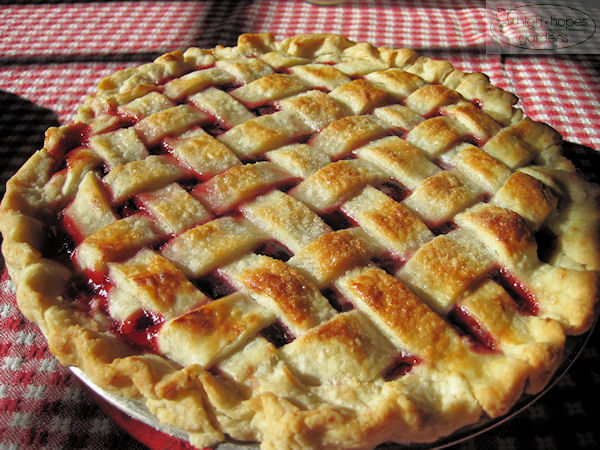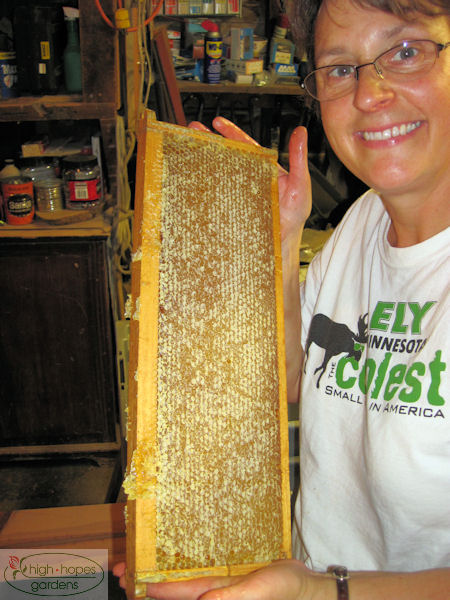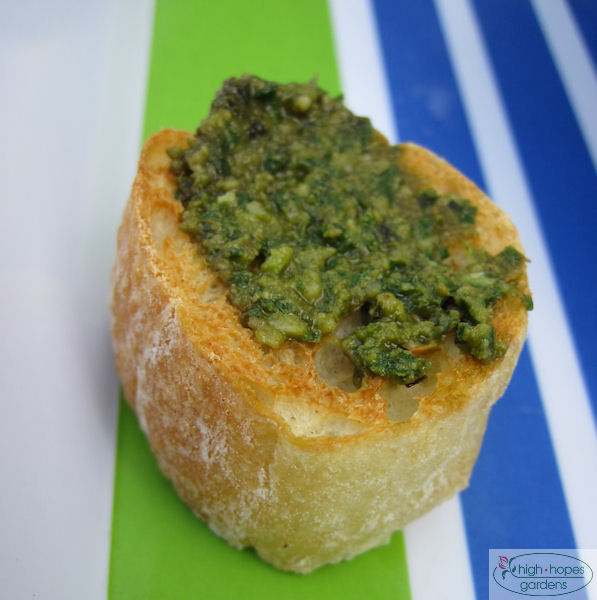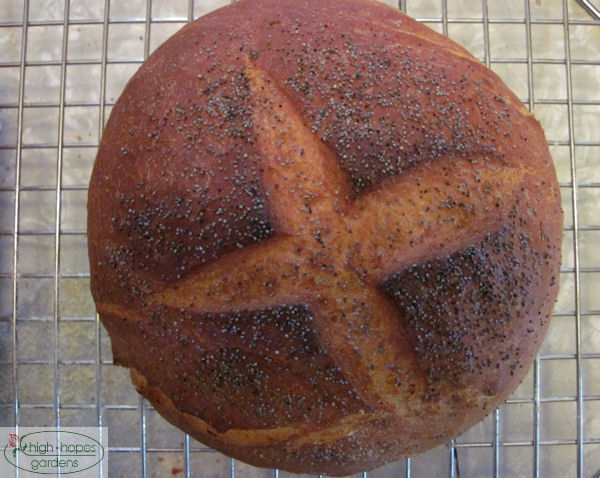Part of tagging along with Claire meant I could participate in the symposium sessions.
One of the speakers was Bill Gates, a guy who used to work for Microsoft. I was rather disappointed with the Register’s coverage of his speech as the headline read “Gates calls Biotech Seeds Critical to Fighting Hunger.” Although there is no doubt of that as he said “I made a fortune in technology, so it should be no surprise I’m a fan of agricultural technology.” However, I took his real message as the he said the ONLY way to “solve” world hunger would be a improve the standing of smallholder farmers and working with their governments and local institutions. I don’t see how distributing GMO seeds to every remote corner of the world will be feasible, especially on an annual basis as the seeds cannot be saved from one year to the next. The logistics of that are staggering.
Gates also pointed out that it also is important to avoid the environmental degradation linked with the Green Revolution in the 1960s, when increased use of fertilizer and pesticides helped boost crop production in Asia. Of the 1.2 billion the Gates foundation money, about 5% is targeted to biotech. All in all, I thought the headline was an easy out to focus on the most controversial part of his speech. After all it’s much easier to write that than delve into the relatively boring details of working on world hunger.
Perhaps a session that was more interesting was this one hosted by former food prize laureate Catherine Bertini. The topic was one that sounded academic and dry, but turned out to be fascinating – “Gender in Agriculture, Nutrition and Health. The take-home from this panel was that, when we think of worldwide farmers – think of a face of a woman, as 80% of the farmers in the world are women. Typically women gather the food, prepare the food, and grow the food.
Studies have shown that women are also better stewards of the money for the household – using it more wisely to take care of children than men. But women, around the world are much less educated, and previous aid programs did not consider the fact of who is dong the farming. Foods would be sent to fuel-poor countries that took too long to cook – bags of seeds were sent in 50 lb bags, to heavy for women to handle. Education and extension is delivered to men. Educated women have fewer children, and thus an easier economic time.
I found the symposium to present many points of view – including a panel that had the “Sustainability Director” of Syngneta, the Chief Economist from John Deere, a researcher from the Worldwatch Institute and a former Food Prize Laureate and current leader of the Millenium Institute!
Perhaps the most surprising session was one that dealt with global climate change and agriculture. Unexpectedly, the strongest urge to action to stop human-induced climate change came from a 3 star Navy Admiral. He and other highest-ranking recently retired members of the U.S. Military called climate change the biggest threat to national security the United States faces.
Strategic decisions are, by necessity, based on trends, indicators and warnings because, as a chairman of our panel, retired Army Gen. Gordon R. Sullivan, said, “We never have 100 percent certainty. We never have it. If you wait until you have 100 percent certainty, something bad is going to happen on the battlefield.”
After carefully considering the threat of climate change and America’s current energy consumption to our national security, the Military Advisory Board finds the trends and warnings are clear. Our sobering conclusion is that climate change and the U.S. energy posture constitute a serious and urgent threat to national security — militarily, diplomatically and economically.
Climate change differs from traditional military threats. It is not a well-defined enemy or a specific crisis spot with a fixed timeline for response. Rather, it is a threat multiplier that magnifies instability in the most volatile places in the world and increases a variety of threats across the board.
This will inevitably create a growing need for U.S. military intervention with missions ranging from humanitarian assistance, to peacekeeping, to the need to deal with dangerous conflicts over resources in regions critical to U.S. national security. The conditions created by climate change will vary across the globe and affect different locations, including in our own nation, in a variety of ways: drought, flood, extreme weather events, crop failure, acidic oceans, fishery collapse, starvation and disease.
These conditions will lead to conflict over scarce resources and cause mass migration by people in search of security and the essentials of life, creating sustained natural and humanitarian disasters on a scale and at a frequency far beyond those we see today.
This, in turn, will create great social and political instability where demands for basic human needs exceed the capacity of governments to cope. As fragile states become failed states, desperation, hopelessness and a vacuum of governing power create a dangerous breeding ground for extremists and terrorism.
When populations get more desperate, the likelihood of military conflicts goes up, and the more instability, the more likely and greater the pressure to use our military. Climate-driven crises are already happening. Darfur and Somalia are present-day examples of instability and failing states. In South Asia and in the Middle East, very densely populated regions with long-standing tensions, climate change will create greatly increased competition, and perhaps regional conflict, over traditional supplies of fresh water.
As the Himalayan glaciers recede, nations such as China, India and Pakistan will have to deal with internal and external unrest due to a much less reliable source of water to meet the needs of growing populations. There already exists a rapidly increasing competition for diminishing supplies of water for agriculture and basic human needs in the Middle East.
The danger of oil
At the same time, increasing demand for, and dwindling supplies of fossil fuels will lead to greater instability around the world, including many of the places worst hit by climate change. In our second report, the CNA Military Advisory Board concluded that America’s approach to energy has placed the nation in a dangerous and untenable position. The report identifies a series of current risks created by America’s energy policies and practices.
Militarily, our inefficient use and overreliance on oil adds significantly to the great risks already assumed by our troops. It reduces combat effectiveness and exacts a huge price tag in dollars and lives. It puts our troops — more directly and more often — in harm’s way.
Fuel convoys can stretch over great distances, traversing hotly contested territory and become attractive targets for enemy forces. Ensuring convoy safety and fuel delivery requires a tremendous diversion of combat force. As in-theater energy demand increases, more assets must be diverted to protect fuel convoys rather than to directly engage enemy combatants.
We saw this in Iraq and we are certainly seeing it in Afghanistan where the pace of military operations, the size of the force and its effectiveness is literally paced by our ability to get fuel when and where it’s needed. Consider the recent hijacking of fuel trucks by the Taliban in Afghanistan and the ensuing civilian deaths, greatly damaging the political goals that are central to the NATO and coalition mission.
The commandant of the Marine Corps recently deployed an energy audit team to Afghanistan to find ways to increase energy efficiency and to use more sustainable forms of energy in order to lighten the expeditionary load, lower logistics vulnerability and improve fighting effectiveness.
Beyond the military’s own fuel needs, our nation consumes more oil than any other single country. Ensuring the flow of that oil stretches our military thin — the men and women already fighting wars on two fronts. We rely on our armed forces to protect sea lanes and maintain a continuous high level of forward presence to ensure we can fill up our cars and trucks. The October 2000 terrorist attack on the USS Cole, while on a refueling stop in Yemen, was a tragic reminder of the convergence of oil, instability, terrorism and the need for ever vigilant forward presence by Americans in uniform.
And our nation’s dependence on oil — not just foreign oil — reduces our leverage internationally and limits our diplomatic options. We simply do not have enough oil resources in this country to ever meet our growing demand or to shield us from the volatile price spikes and shortages in a global market.
Using too much
Even accounting for the recent discovery of deep sea oil reserves in the Gulf of Mexico, America controls only 3 percent of the world’s oil supply while we consume 25 percent of the oil produced every year. Making the assumption that fuel is going to be available and affordable whenever and wherever we need it leads to a fundamentally flawed strategy. It will neither be available nor affordable.
The growing divergence of supply and demand curves for global oil dictates ever-greater scarcity and ever increasing cost. By remaining dependent on oil the United States will continue to be entangled with unfriendly rulers and undemocratic nations — simply because we need their oil. And we cannot produce enough domestic oil to change this dynamic. That is just a short-term solution that simply continues our harmful addiction to oil. We need to recognize that we cannot drill our way to sustained prosperity and security — we have to wean ourselves from our reliance on oil, starting now.
Economically, we are in the midst of a severe financial crisis, and our approach to energy is a key part of the problem. We are heavily dependent on a global petroleum market that is highly volatile. In 2008, we sent $386 billion overseas to pay for oil — a good deal of it going to nations that wish us harm. In the last year alone, the per-barrel price of oil climbed as high as $140 and dropped as low as $40. Just a $10 change in the per-barrel cost of oil translates to a $2 billion increase in the Pentagon’s energy costs.
This price volatility is not limited to oil — natural gas and coal prices also saw huge spikes in the last year. While coal and natural gas resources may be plentiful, they are increasingly difficult to access, and have associated impacts that are expensive. As we begin to recover from the current global recession, the price of energy will inexorably go up and with it, the risks to our nation’s economic and security future.
Hummer, be gone
There are those who say we cannot afford to deal with our energy issues right now. But if we don’t begin to address our long-term energy profile now, future economic crises will dwarf this one. The market for fossil fuels will be shaped by finite supplies and increasing worldwide demand, the volatile cycle of fuel prices will become sharper and shorter, and without immediate action to change our energy profile, the national security risks, economic and military, will worsen.
Every single day that goes by, we are more vulnerable to very real threats to our energy supply: a major hurricane in the Gulf of Mexico, Iran closing down the Strait of Hormuz, terrorist actions against major oil production facilities, or an oil embargo by OPEC.
Using the most reasoned and fact-based military judgment, members of the Military Advisory Board concluded that we must transform the way our country produces and uses energy. Diversifying our energy sources and moving away from fossil fuels is critical to our future energy security. This will inevitably mean moving to more renewable sources of energy, greater efficiency and to a significantly reduced dependence on fossil fuels.
As the largest single user of energy in the country, the Department of Defense can play a leadership role. As one of my colleagues on the Military Advisory Board quipped, “America, we gave you the Hummer when oil was cheap; now we’re taking it back!”
So if you ever run against someone who doubts the importance of climate change, you’ve now got the brightest minds of the US military on your side – in essence whose who deny the effects of climate change are essentially undermining United States national security.
one year ago…”Thingamajig Thursday #137″













































































































































































































